
The 2025 edition of the Tour de France is only a few days away - and if you’ve watched previous editions, there’s probably quite a fair few points that might have piqued your curiosity. That is to be fully expected - a lot is left going on behind the scenes that the cameras aren’t capturing.
Google's autocorrect can provide us with a wealth of information around the general public's deepest thoughts about the pros. For instance, it seems there are enough people desperately searching for ‘how do cyclists pee whilst racing the Tour de France?’ that the search engine is serving up this suggestion for everyone.
Naturally, we couldn’t leave them hanging, and our answer to how exactly cyclists do pee during top level races can be found here. There’s an almost dizzying array of other questions, too, which we'll get fully stuck into here.
We will take a look at Tour de France performance trends and, continuing past the finish line, we’ll also reveal what the riders get up to in their team buses and talk more about how the pros deal with the hotel-to-hotel life that makes up the three weeks of a Grand Tour.
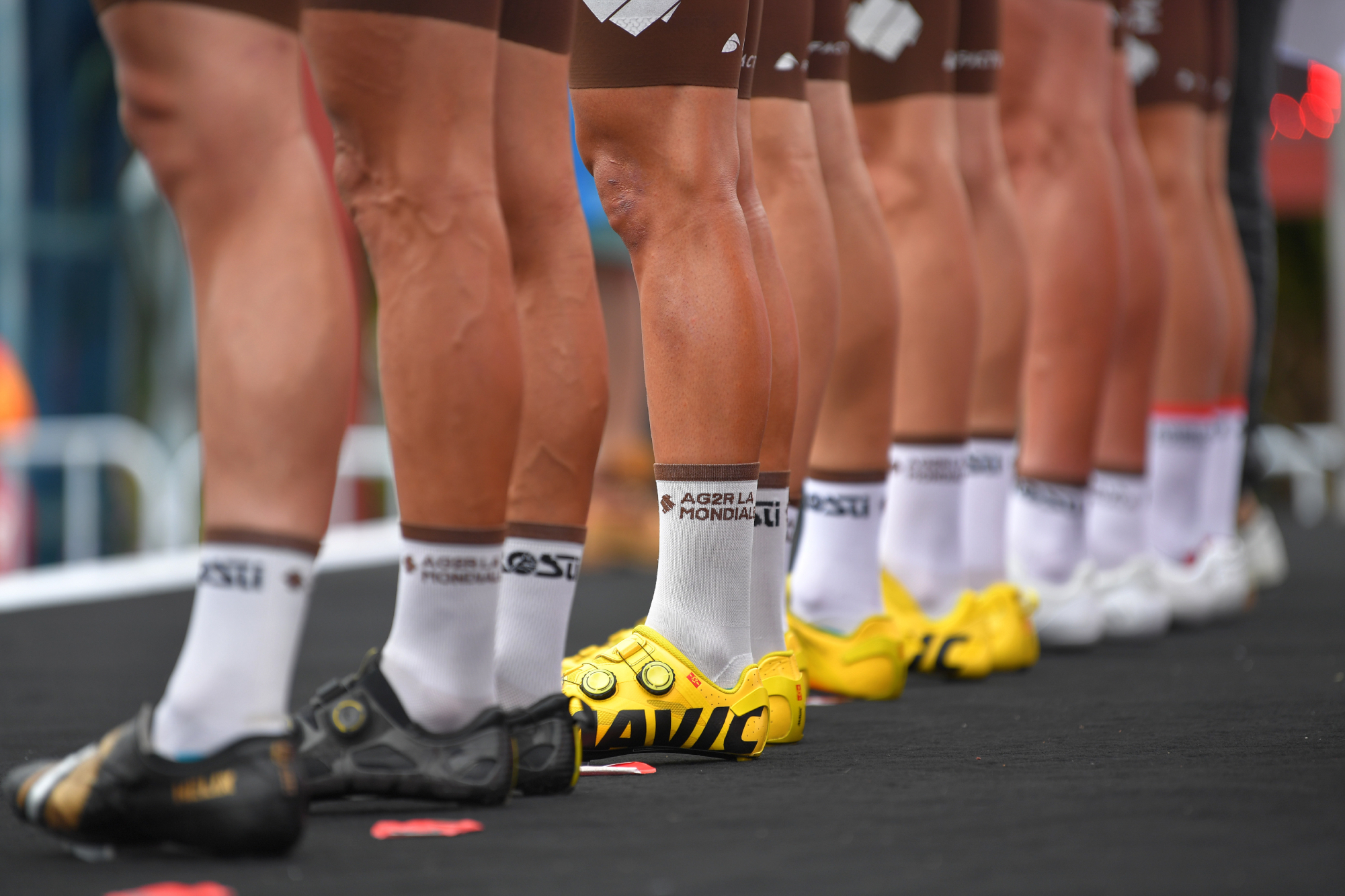
Why are Tour de France cyclist’s legs so veiny?
We’ve all got veins in our legs quite near to the skin surface, but they are hidden by a layer of fat just under the skin.
Tour de France cyclist's legs appear to be uber-veiny for two main reasons: firstly, they have much less body fat than ‘ordinary’ people, and secondly, their veins and arteries have adapted to carry more blood around their bodies. The cardiovascular adaptations are numerous, but a large increase in vein and artery diameter is one of them. You can read more about the science behind why Tour de France rider’s legs are so veiny here.
What do Tour de France riders do on their rest days?
They ride, and not just a little amble around the streets. Most will be on their bikes for two hours and some even more.
In the early days of Team Sky, Russell Downing found out why after the first rest day of his Grand Tour debut in the 2011 Giro d’Italia: “It was a hard race, the weather was bad and by the first rest day I was really tired. The others asked if I was going with them, but it was cold and raining and I said I’d go on the turbo in the hotel basement instead. I did that for about 45 minutes, just very easy, then went back upstairs to lie down. Next day I was nailed for the whole stage, just hanging on. I was okay the day after, but I’d learnt my lesson and rode with the boys on the next rest day. If you don’t ride reasonably hard on the rest day, your body thinks you’ve stopped and switches off ready for deep recovery. You’ve got to keep it firing for the whole three weeks.”
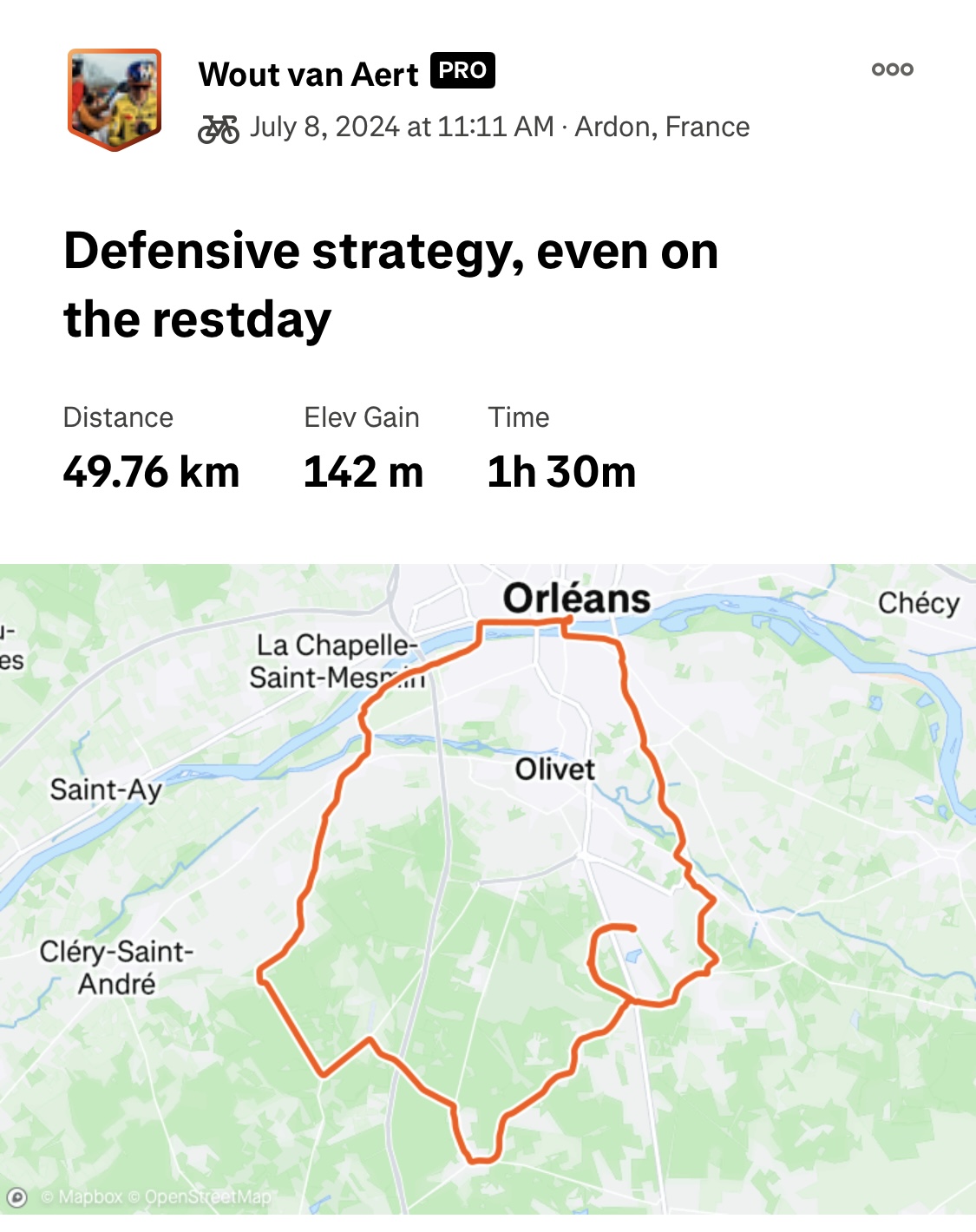
What is a soigneur in cycling and what are their duties during the Tour de France?
Soigneur is the French word for ‘carer’, and basically soigneurs care for riders. They prepare them for each stage, looking after them at the finish and back the hotel, with massage and rehab therapies. And they care in other ways too.
Dirk Nachtergaele, a Belgian pro team soigneur for over 40 years says: “A soigneur is also like a priest. We are the one who riders can confide in, confident that anything they tell us goes no further. They can complain about another rider, the sports director even; they can talk about problems at home – anything. They know we will not tell anyone what they said. That role as confidante is as necessary in a team as being a skilled therapist.”
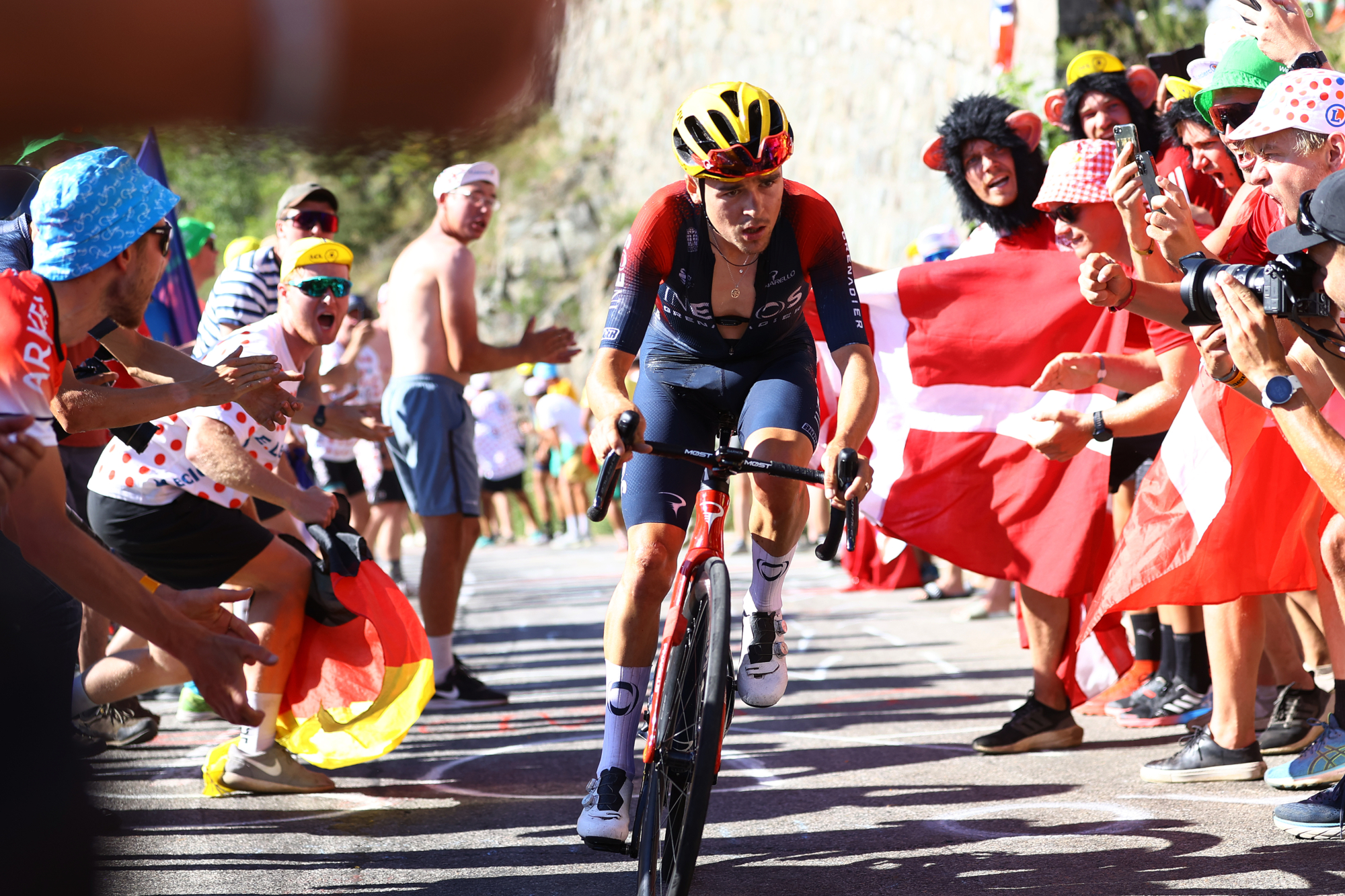
How light and lean are the Tour de France climbers?
Double Tour de France stage winner, and now retired Irish pro rider Dan Martin was a climbing specialist. His racing weight was 62kg, which is light for his 5ft 9in height, but some shorter climbers weigh under 60kg. However, being super-light is no longer the preserve of the pure climbing specialists. Defending Tour champion Tadej Pogačar is the same height as Martin and only slightly heavier at around 66kg, while 2019 winner Egan Bernal, also 5ft 9in, is a true featherweight at just 60kg.
The riders mentioned have started Tour de France races with body fat percentages well below 10 per cent, but nutritionists are careful not to allow ‘cutting’ to go too far.
In fact, it can be better to offload a little muscle, as Dr Rob Child, a performance biochemist who worked with several World Tour teams, explains: “It’s sometimes worth losing a bit of muscle to reduce weight because very low body fat has health implications. Tour de France performance is governed by the cardiovascular system, not by the maximum force applied to the pedals. Pro riders don’t need huge amounts of muscle to pedal at 400 watts for 20 or 30 minutes, and that’s often the key to performing well overall in the Tour. They need a highly developed cardiovascular system, not big muscles.”
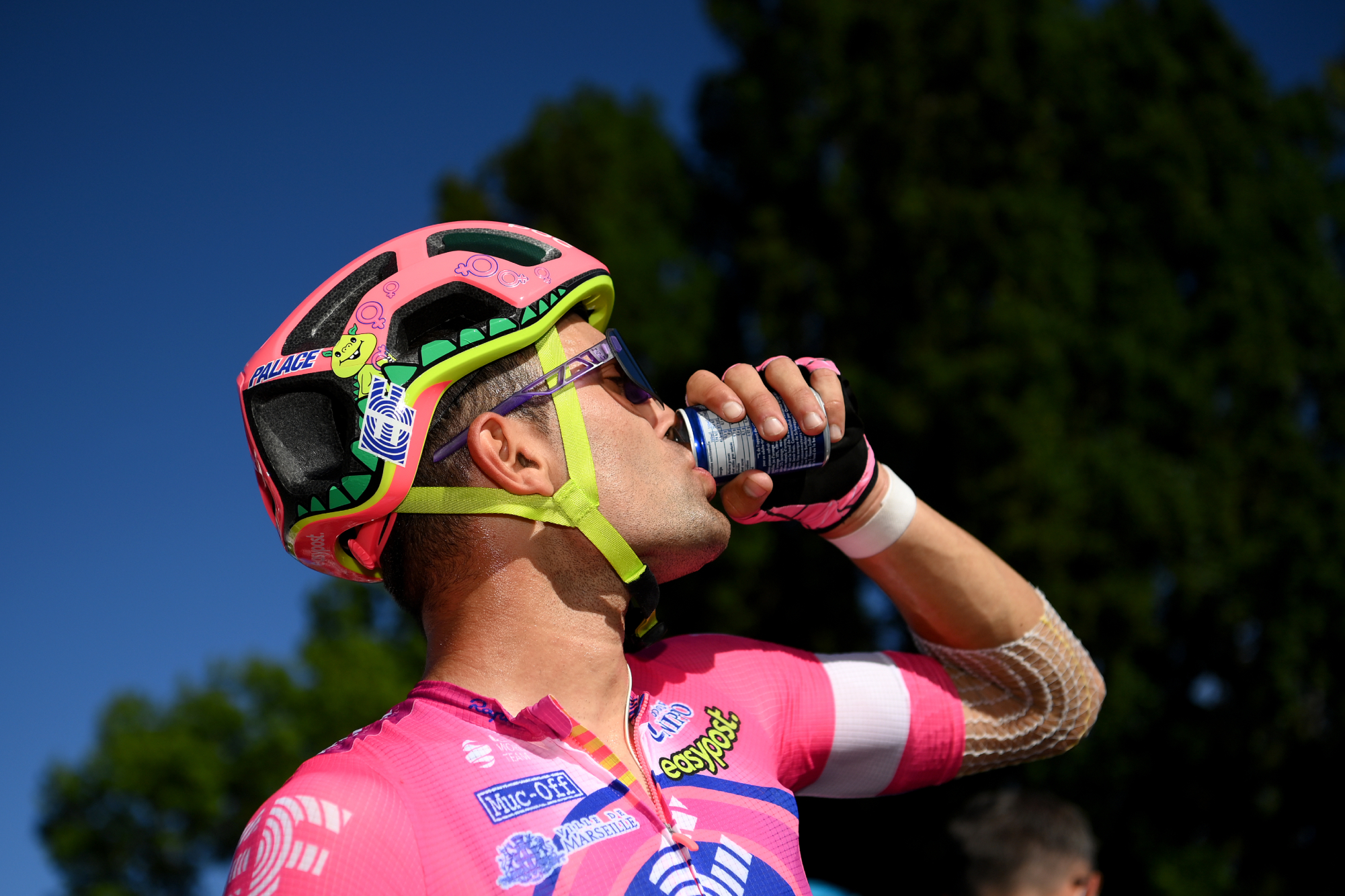
Why do Tour de France riders drink Coca-Cola?
Most team nutritionists would rather the riders didn’t drink coca cola, and some teams even forbid it.
That said, there’s also always one small can of coke in the musettes Trek-Segafredo gives its riders. Drinking a regular fizzy drink such as a cold can of coke after a stage is good for morale – and preserving positivity in a brutal three-week race is vital.
Of course, the most important nutritional consideration for riders is getting enough calories to meet the extreme demands of the race. If you’re wondering how they achieve that, here we look into what exactly goes into fuelling the riders of the Tour de France.
What do Tour de France riders do to recover between stages?
The standard of hotels used by the Tour has improved a lot in recent years, so that helps with sleep and recovery. Even so, teams provide further ‘home comforts’ by carrying all their own bedding, including mattresses and pillows. They also have their own washing machines in the team buses and equipment trucks. Everything is done to promote good sleeping habits and hygiene.
Riders generally do room-share, partly through tradition but also because it’s good to have company. Pairings are decided diplomatically, though.
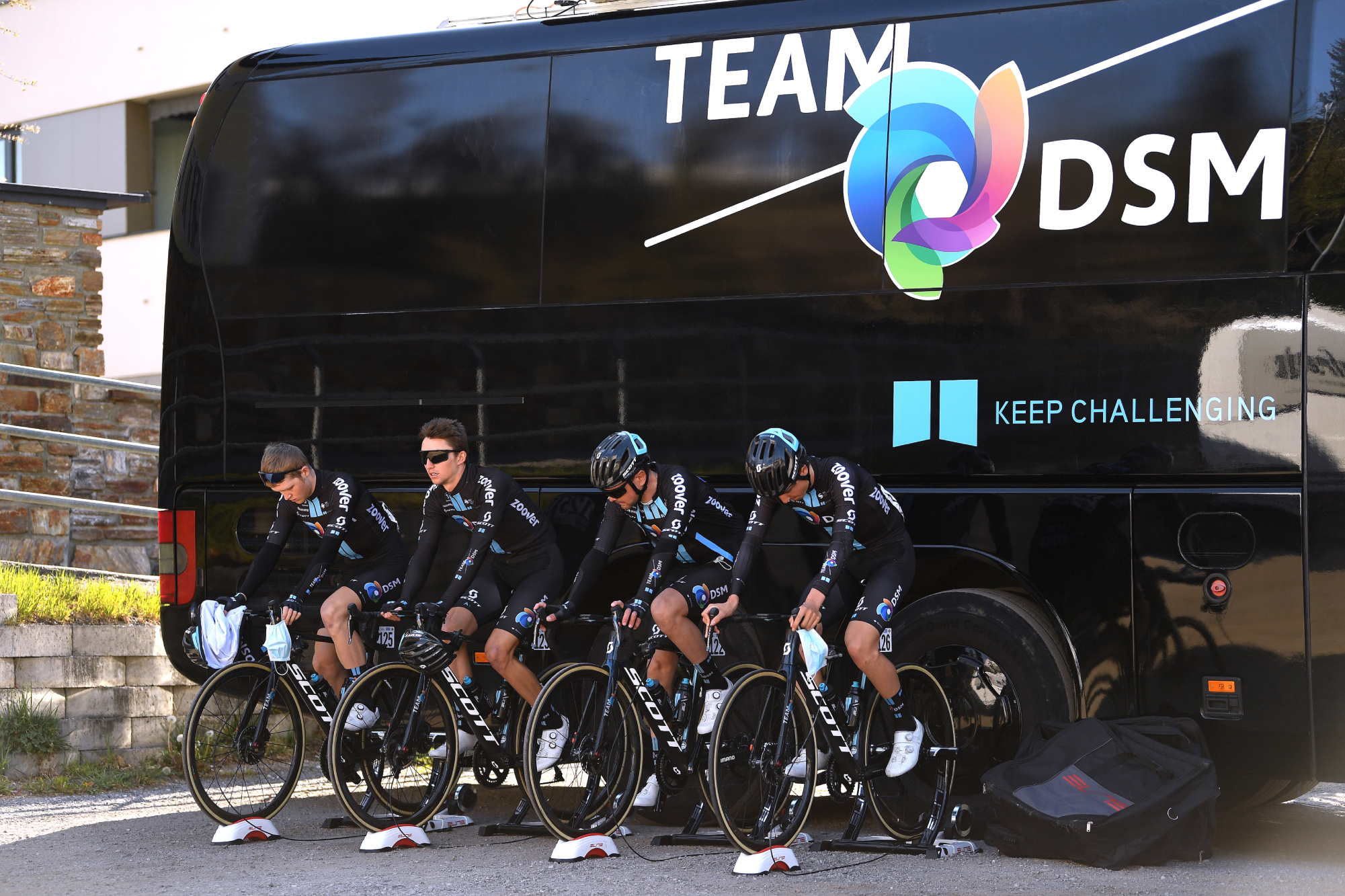
Why and how do riders warm up before each stage?
The ‘why’ is explained by double Tour stage winner Steve Cummings: “There are two races in every stage: the first is to get a breakaway established, and the second is to win the stage. If I saw a stage that suited me, one where a break might stay away and give me a chance to win, I’d focus on the first hour to 90 minutes, nothing else. Typically it was attack after attack right from the start, then a huge effort to get the break established. You had to be fully warmed up for that.”
As to the ‘how’, a Tour warm-up is usually done on a turbo trainer, allowing the whole team to warm-up in one compact space, everyone controlling their effort. Former Ineos-Grenadiers’s deputy team principle Rod Ellingworth says: “The idea is to prepare the rider’s energy systems for a fast start. They ride steady but progressively harder for at least 20 minutes, then do five minutes of capacity work to open everything up. After that they pedal easily and try to stay loose.”
How much do riders have to eat to meet energy demands?
Riders can burn twice or even three times their usual calorie requirement during a hard day at the Tour. Nigel Mitchell, a nutritional consultant who worked extensively with WorldTour cycling teams, says: “At a Grand Tour, riders can burn more than 5,000kcal on a single stage, depending on the terrain, and that means consuming a huge amount, both off the bike at meal times and on it during the race, in the form of energy drinks, bars and gels.” To put 5,000kcal into perspective, it is roughly equivalent to four large McDonald’s BigMac meals.
What do the riders eat after each stage?
Does each rider have their own bespoke meals? Who does the cooking?
Three questions, but they are related and so are the answers, which come from a former Tour de France rider, UAE Team Emirates former sports director and current race analyst Allan Peiper. The man who oversaw Tadej Pogačar’s first Tour de France win in 2020 told us: “Each rider has a bespoke meal plan based on any needs flagged up by team doctors and physiologists, and on any personal physiological quirks such as intolerances or allergies. The medics talk with nutritionists, and the nutritionists tailor meals to meet specific needs. Each team also has its own chef who works with the nutritionist to prepare tailor-made meals.”
How heavy are the heaviest riders in the race, and how do they get over the mountains inside the time cut?
There are very few riders of over 80kg in the Tour de France nowadays. The limiter when climbing mountains is power-to-weight ratio, and if a rider is too bulky they cannot overcome the disadvantage, no matter how mighty their power output. The heaviest Tour de France rider since 2000 was the Swede Magnus Backstedt, who says: “I had to be the lightest I could be for the Tour, which was around 90kg, and as fit as I could be. But at my weight, every hill is steep, and the mountains were a real challenge. On mountain stages, I’d hang on to the peloton for as long as possible, then look for a good grupetto – that’s what we call the groups of non-climbers who ride together to get inside the time limits. Once in a grupetto with experienced riders, it was just a case of digging deep, sometimes very deep, and hanging on.”
Grit and stubbornness get heavier riders up the mountains, but they have an advantage to deploy on the other side, going down. Tour stage winner Sean Yates was a tall, well-built rider, and he says: “You have to get good at descending if you are bigger. You can’t regain all the time you lost going up, but you can get some of it back by really going for it on the descents.”
What’s the relationship between rider age and Tour de France performance?
It used to be that riders developed into Tour contenders gradually over many years. Those youngsters who did take part would be expected to help the team and gain experience, and possibly even drop out after the first week. That’s all changed. Tadej Pogačar was just 21 when he first won in 2020, and Egan Bernal was 22 when he won in 2019. Pogačar’s coach Inigo San Millan has this to say about his rider’s prodigious ability: “He has extraordinary physiological characteristics, and the correct mental attributes, so he was already good enough to win at 21.”
Until Bernal’s win six years ago, it was thought that riders reached their peak in terms of physiology, psychology and skill at around 26 or 27. According to Allan Peiper: “This may still be true, we just don’t know what the young winners we have now will be like when they are 27 or 28. Will they still be winning, or will the next generation have surpassed them?” At the other end of the scale, the oldest Tour winner of modern times was Cadel Evans in 2011, at the age of 34.

What do the riders’ musettes contain?
Nothing very surprising, just a re-supply of the gels, drinks and energy bars. Musettes were more interesting in times gone by, when they contained cakes and tarts for energy, small ham and cheese baguettes for protein, and all manner of delights. The food was individually wrapped and packed by the soigneurs. The first female soigneur Shelley Verses, who worked for US team 7-Eleven in the 1980s, used to wrap her riders’ food in pages from Playboy magazine. “It was good for their morale,” she commented.
Do Tour de France riders drink alcohol during the three weeks?
Yes, but not much. Stage wins might be celebrated with a glass of champagne, and sometimes a small glass of red wine is taken with the evening meal, but that’s as far as it goes. Teams have tried total bans on alcohol, but most allow small amounts to protect morale.
All rather sensible – not like Tour riders from previous eras. In the early days of the race, riders drank wine and beer during stages because it was less of a threat to health than the contents of some of the primitive water supplies. Right up to the 1960s, some riders enjoyed a mid-Tour tipple or two. One of the most notorious stories is about the 1964 Andorran rest day when race leader Jacques Anquetil went to a party and indulged to such an extent he was hungover the next day and almost lost the race.
How do Tour de France riders stay hydrated through sweltering long stages?
Nigel Mitchell tells us: “I get riders to start drinking as soon as they wake. I mix water with a little fruit juice in a big bottle, because that makes it more interesting than plain water, and I ask them to finish it before breakfast. They drink fruit juice with breakfast for the electrolytes, and another bottle of diluted fruit juice travelling to the stage start.
“During the stage, they drink from two bottles on the bike, one plain water and one energy drink, and they keep getting fresh bottles from the team car or support motorbikes. They get more fluid in a protein shake after the stage, and an electrolyte drink if it’s been hot. I also provide rice cakes, which contain quite a lot of moisture from the water absorbed by the rice during cooking.
“Even then, we still check on hydration by checking the rider’s weight each morning. If they are well hydrated, they will stay at pretty much the same weight throughout the Tour.”
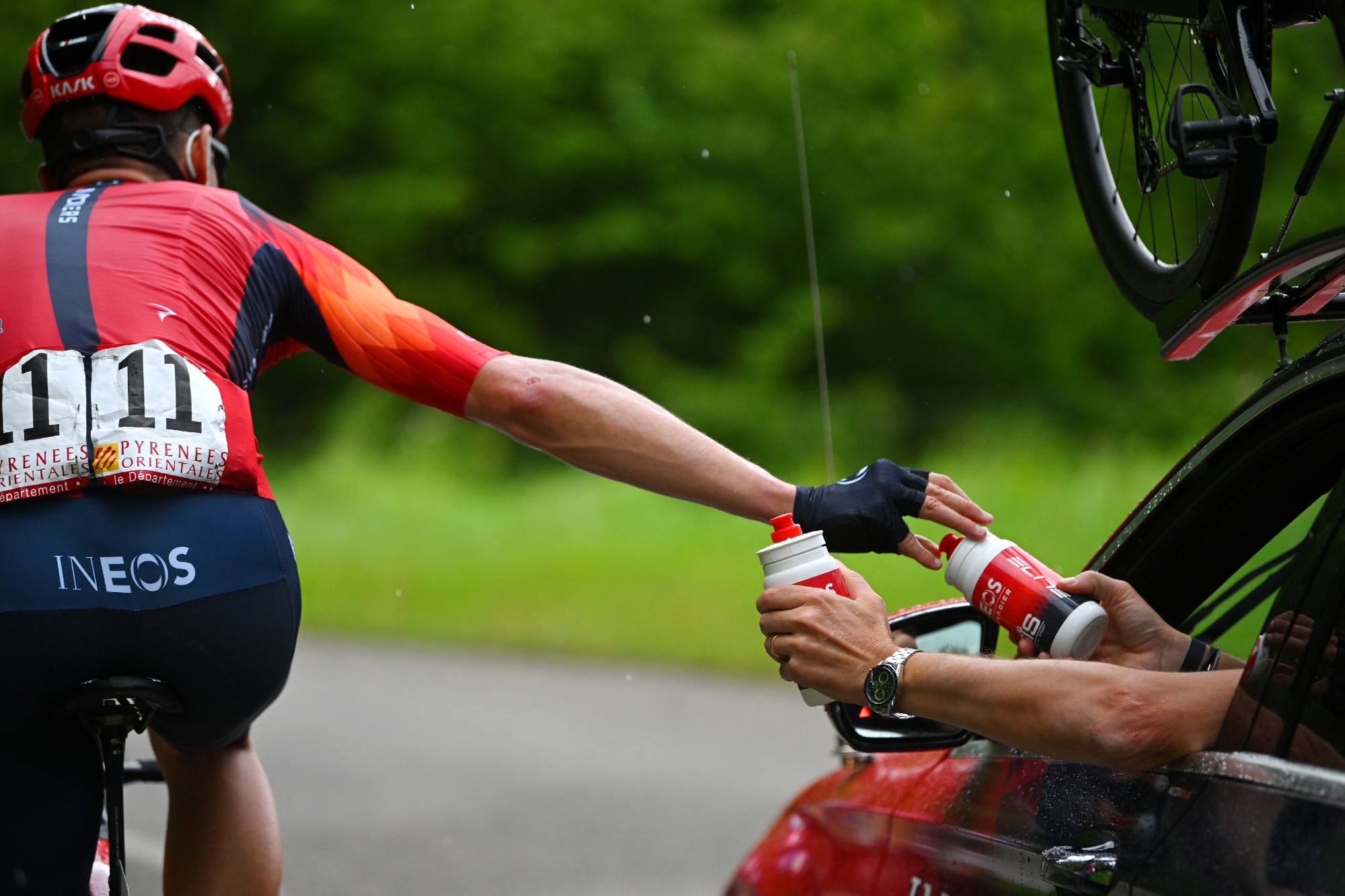
What’s the role of the bottle-carrying domestiques in the Tour de France?
The cycling community uses a lot of French words, with domestiques being one of them. Transporting bottles from the team car to team-mates in the peloton is just one of many duties carried out by domestiques.
This supply chain is overseen by the sports directors, as Allan Peiper explains: “The sports directors have real-time information in the team cars on each rider’s performance metrics. They can tell if anyone is having a bad day, and they won’t ask that rider to drop back to the team car and pick up bottles, because it could just push them further into the red.”
Each team has several domestiques and their role, although complicated in execution, is straightforward in mission. It’s to put the team’s leader (or leaders) in the best position to challenge for victory.
That could involve riding at the front to control the peloton’s pace, leading riders who’ve punctured back to the action, chasing when a breakaway needs to be brought back, leading out sprinters at the end of stages, setting the pace in the mountains, and many other jobs. They even perform a very unglamorous function in comfort stops.
Find definitions of the French cycling terms you hear during the Tour de France, such as domestiques, over here.
In terms of FTP and watts per kilo, what does it take to be a GC contender at the Tour de France?
In 2020 the power meter supplier to Team UAE Emirates, Stages, released the following information on Tour de France winner Tadej Pogačar’s performance metrics from Stage Nine, a mountainous stage in the Pyrenees:
Time: 3:58:16
Average power: 301W (4.5W/kg)
Normalised power: 351W (5.4W/kg)
Peak 5min power: 473W (7.2W/kg)
Peak 20min power: 429W (6.5W/kg)
To put these figures in context, good amateur racers (i.e. cat two) are capable of five-minute power in the region of 4-5W/kg and 20-minute power of 3.5-4.1W/kg. Even for committed amateurs who train hard, a huge gulf in performance separates them from the likes of Pogačar.
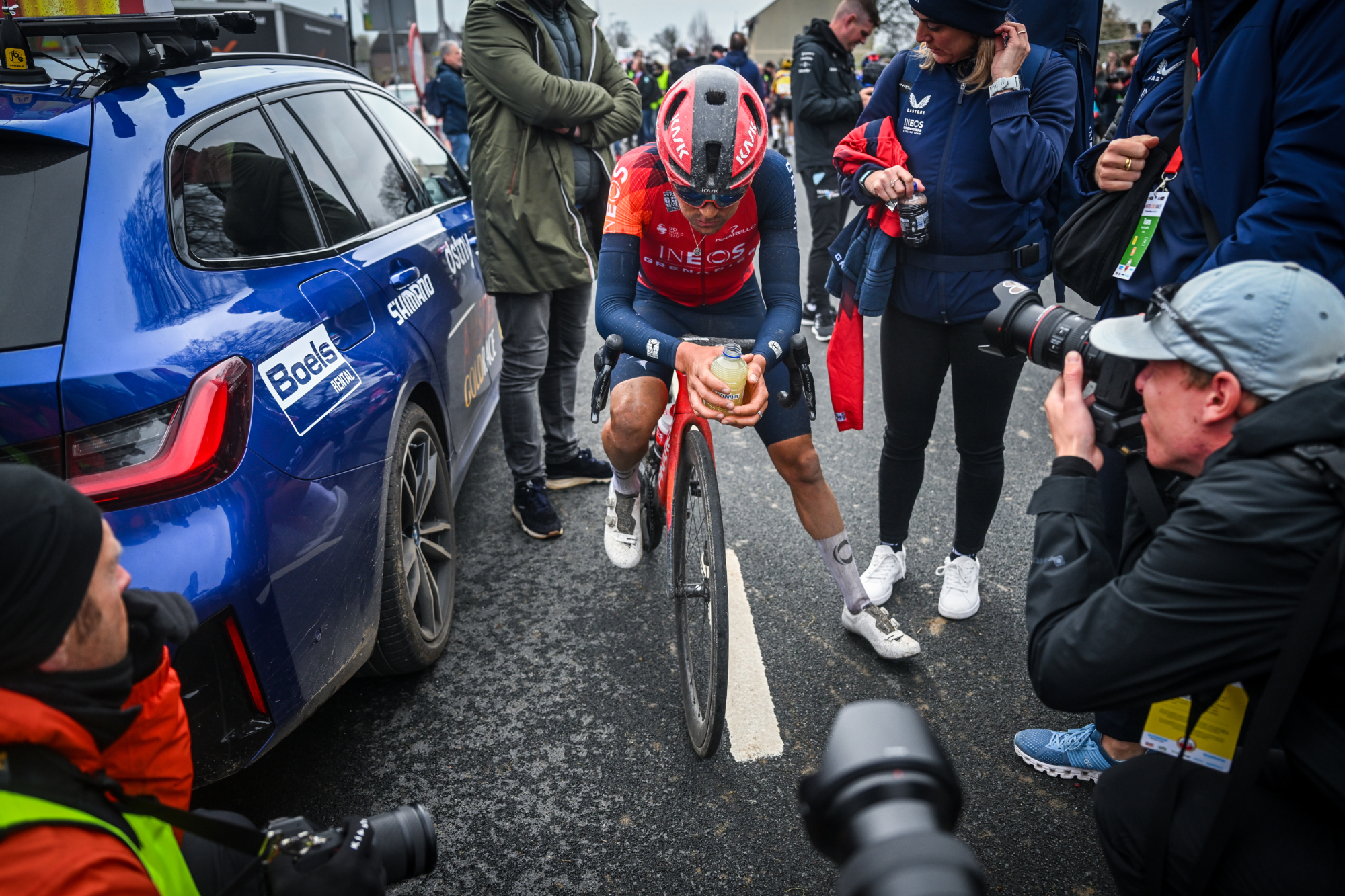
Do Tour de France riders use dietary supplements. If so, which ones?
They need lots of protein to help recover, so they drink recovery drinks and eat protein bars to augment the protein they get from food. They sometimes consume vitamin and mineral supplements too. Dr Rob Child says: “I try to meet a rider’s needs through well-cooked, nutritious foods, but I always know what their nutritional state is in detail. We take regular blood tests, and I can use supplements to make good any deficiencies.”

Do riders pee during the Tour de France?
If the race pace isn’t too high, riders can stop by the side of the road, having picked a place where nobody can see – which can be difficult. Peeing on the move is a skill Tour de France pros must have in their toolbox. It’s tricky, as it’s impossible to pedal while peeing, so it’s up to the poor domestique to ride alongside and with a hand on the back to maintain forward momentum.
And here’s how difficult peeing can be…In 1965 British pro Vin Denson rode the 1965 Bordeaux-Paris, a 365-mile single day race, in support of the race winner Jacques Anquetil. As he approached Paris late in the afternoon, Denson realised he hadn’t peed since the start at 2.30am, and he was bursting. He stopped at the side of the road, but found he couldn’t pee at all, even though his bladder was full. Desperate, he shouted to the stationary team car and his soigneur got out, poured a flask of hot coffee down the front of Denson’s shorts, and Denson recalled: “I went like a fountain – it was glorious!”
This full version of this article was published in the print edition of Cycling Weekly. Subscribe online and get the magazine delivered direct to your door every week.
!["[T]he First and Fifth Amendments Require ICE to Provide Information About the Whereabouts of a Detained Person"](https://images.inkl.com/s3/publisher/cover/212/reason-cover.png?w=600)






